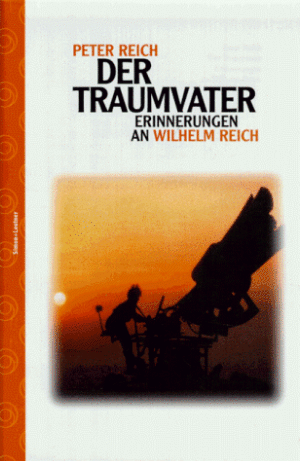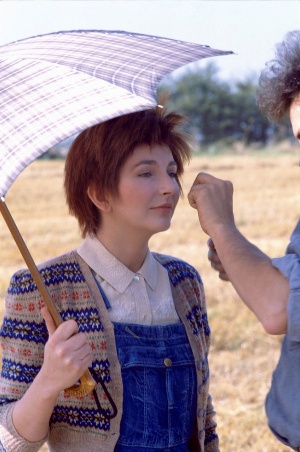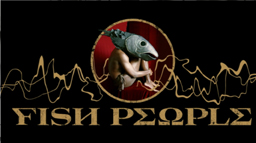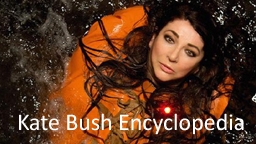 Dieser Song ist der Hammer. Anders kann ich es nicht sagen. Selten gibt es solch eine makellose Einheit zwischen Text, Musik und zugrundeliegender Geschichte.
Dieser Song ist der Hammer. Anders kann ich es nicht sagen. Selten gibt es solch eine makellose Einheit zwischen Text, Musik und zugrundeliegender Geschichte.
 Der Song handelt von einer Beziehung zwischen Sohn und Vater, die durch äußere Kräfte bedroht und zerstört wurde. Er basiert auf dem Buch „Book of Dreams“ von Peter Reich, dem Sohn des berühmten und umstrittenen Psychoanalytikers Wilhelm Reich. Im Lauf seines Lebens driftete Wilhelm Reich immer mehr ins Esoterische ab. Eine seiner Ideen war eine Regenmaschine, der „Cloudbuster“, zu der Vater und Sohn zusammen gingen, um Regen zu machen. Wegen seiner immer obskureren Experimente mit sogenannten „Orgon-Akkumulatoren“ – Orgon ist eine von ihm postulierte spezifische biologische Energie – geriet Wilhelm Reich ins Zwielicht. Ein verfügtes gerichtliches Verbot der Verwendung dieser Geräte sowie die Verfügung, diese sowie alle seine Bücher zu vernichten, wurde von Reich nicht akzeptiert. Nachdem ein Mitarbeiter Reichs gegen das gerichtliche Verbot verstieß, Orgon-Akkumulatoren über Grenzen der US-Bundesstaaten zu transportieren, wurde Reich 1956 zu einer zweijährigen Haftstrafe wegen „Missachtung des Gerichts“ verurteilt. Reich starb während der Haft im November 1957. [1]
Der Song handelt von einer Beziehung zwischen Sohn und Vater, die durch äußere Kräfte bedroht und zerstört wurde. Er basiert auf dem Buch „Book of Dreams“ von Peter Reich, dem Sohn des berühmten und umstrittenen Psychoanalytikers Wilhelm Reich. Im Lauf seines Lebens driftete Wilhelm Reich immer mehr ins Esoterische ab. Eine seiner Ideen war eine Regenmaschine, der „Cloudbuster“, zu der Vater und Sohn zusammen gingen, um Regen zu machen. Wegen seiner immer obskureren Experimente mit sogenannten „Orgon-Akkumulatoren“ – Orgon ist eine von ihm postulierte spezifische biologische Energie – geriet Wilhelm Reich ins Zwielicht. Ein verfügtes gerichtliches Verbot der Verwendung dieser Geräte sowie die Verfügung, diese sowie alle seine Bücher zu vernichten, wurde von Reich nicht akzeptiert. Nachdem ein Mitarbeiter Reichs gegen das gerichtliche Verbot verstieß, Orgon-Akkumulatoren über Grenzen der US-Bundesstaaten zu transportieren, wurde Reich 1956 zu einer zweijährigen Haftstrafe wegen „Missachtung des Gerichts“ verurteilt. Reich starb während der Haft im November 1957. [1]
Ein Vater wird verhaftet und stirbt, das Kind bleibt allein zurück. „Cloudbusting“ ist ein Rückblick, eine Erinnerung, ein Traum, ein Wunschtraum. Immer wenn es regnet ist diese Erinnerung wieder da, ist der Vater wieder da im Kopf. Kate Bush fasst die Essenz des Songs in zwei Sätzen zusammen: „But it’s very much more to do with how the son does begin to cope with the whole loneliness and pain of being without his father. It is the magic moments of a relationship through a child’s eyes, but told by a sad adult.“ [2]
Kate Bush war zufällig auf das Buch gestoßen. Die Magie des Buches schlug bei ihr ein wie ein Blitz. „It must have been nearly ten years ago, when I used to go up to the Dance Center in London, that I went into Watkins‘ occult bookshop for a look, and there was this book and it said, A Book of Dreams, by Peter Reich. I’d never heard of his father, Wilhelm Reich, but I just thought it was going ‚Hello, Hello,‘ so I just picked up the book and read it and couldn’t believe that I’d just found this book on the shelf. I mean it was so inspirational, very magical, with that energy there. So when I wrote and recorded the song, although it was about nine years later, I was nevertheless psyched up by the book, the image of the boy’s father being taken away and locked up by the government just for building a machine to try to make rain. It was such a beautiful book!“ [3]
Die Geschichte war wohl deshalb so faszinierend, weil sie verschiedene typische Bush-Motive bündelt. Es geht um komplizierte Beziehungen zwischen Menschen, die Geschichte enthält geheimnisvolle und mysteriöse Elemente, es gibt kein richtiges Happy-End, es endet bittersüß, es löst Bilder aus, an denen sich ein Song entlang entwickeln kann.
Kate Bush erläuterte das im Detail in verschiedenen Interviews: „And it’s a very unusual, beautiful book, written by this man through the eyes of himself when he was a child, looking at his father, and the relationship between them. Very special relationship, his father meant so much to him. His father was a psychoanalyst, very respected, but he also had a machine that could make it rain, and the two of them would go out together and they would make it rain. And in the book there was such a sense of magic, that it a way the rain was almost a presence of his father. Unfortunately, its a very sad book in that the peak of it is where his father was arrested, taken away from him, because of his beliefs he’s considered a threat. And it’s how the child has to cope from that point onwards without his father. And the song is really using the rain as something the reminds the son of his father. Every time it rains instead of it being very sad and lonely, it’s a very happy moment for him, it’s like his father is with him again.“ [4]
 Jeder Satz von Kate Bush spiegelt die Faszination wieder, die das Buch ausgelöst hat. Es geht um das „Wunder einer Beziehung“. „It’s a very magical sense in the book for me this sort of encaptulated the wonder of their relationship, and unfortunately the book leads up to where his father is arrested because his beliefs are considered somewhat outrageous. And to the child it’s its coping from then on without his father. And the song is really about that adult looking back at the magic of their relationship, how much they loved it and how for him now that his father is not there anymore that every time it rains he thinks about how they were together out there on the machine cloudbusting. And it makes him happy he’s finds a way with coping with it.“ [5]
Jeder Satz von Kate Bush spiegelt die Faszination wieder, die das Buch ausgelöst hat. Es geht um das „Wunder einer Beziehung“. „It’s a very magical sense in the book for me this sort of encaptulated the wonder of their relationship, and unfortunately the book leads up to where his father is arrested because his beliefs are considered somewhat outrageous. And to the child it’s its coping from then on without his father. And the song is really about that adult looking back at the magic of their relationship, how much they loved it and how for him now that his father is not there anymore that every time it rains he thinks about how they were together out there on the machine cloudbusting. And it makes him happy he’s finds a way with coping with it.“ [5]
Über kaum einen ihrer Songs hat sich Kate Bush so ausführlich geäußert. Neun Jahre hat diese Geschichte in ihr gereift und auf den richtigen Moment gewartet, um als Song wiedergeboren zu werden. „Yes, but I read that so long ago and it’s just been waiting to come out for nine or ten years. The thing is, I had to wait till I was at the right point to write that song in such a way that I could do it proper justice.“ [3]
Pulsierende Streicher und ein staccatoartiger Rhythmus kennzeichnen „Cloudbusting“. Die Streicher aus dem Fairlight wurden später durch reale Streicher ersetzt – wahrscheinlich, um die Wärme und Emotionalität zu betonen. „There were very few track on this album that I wrote on the piano -Running Up That Hill, Hounds of Love, Watching You Without Me. Most of them were Fairlight based. Cloudbusting I wrote on the Fairlight and I just felt it would be much more interesting with real strings, so we transcribed the Fairlight arrangement from string players to reed. And then they redid it.“[4]
Dieses rhythmische Streicherpochen klingt wie ein Herzschlag in der Dunkelheit, die Protagonistin schreckt aus einem Traum auf: „I still dream of Orgonon / I wake up crying“ (Textzitate aus [6]). Es ist ein Alptraum, da sofort alles wieder präsent ist, Verhaftung und Tod, Verlassenheit. Es fühlt sich an, als ob der Vater wieder ganz nah ist: „And you’re just in reach / When you and sleep escape me.“ Bei „You’re like my yo-yo“ im zweiten Teil der Strophe kommen Trommeln dazu und Hintergrundtöne, die wie ein stimmenloser Chor (Synthesizer?) klingen.
Im Song wird der Vergleich mit einem Jo-Jo gezogen, das mit in der Dunkelheit leuchtender (radioaktiver) Farbe bestrichen ist. „You’re like my yo-yo / That glowed in the dark. / What made it special / Made it dangerous, / So I bury it / And forget.“ Zu dieser merkwürdigen und geheimnisvollen Passage gibt Kate Bush selbst eine Erklärung.
„The song is very much taking a comparison with a yo-yo that glowed in the dark and which was given to the boy by a best friend. It was really special to him; he loved it. But his father believed in things having positive and negative energy, and that fluorescent light was a very negative energy –as was the material they used to make glow-in-the-dark toys then– and his father told him he had to get rid of it, he wasn’t allowed to keep it. But the boy, rather than throwing it away, buried it in the garden, so that he would placate his father but could also go and dig it up occasionally and play with it. It’s a parallel in some ways between how much he loved the yo-yo –how special it was– and yet how dangerous it was considered to be. He loved his father (who was perhaps considered dangerous by some people); and he loved how he could bury his yo-yo and retrieve it whenever he wanted to play with it. But there’s nothing he can do about his father being taken away, he is completely helpless. “ [2]
Die Protagonistin kann das vielleicht gefährliche Jo-Jo verstecken und immer wieder herausholen. Den für die Öffentlichkeit vielleicht gefährlichen Vater kann sie nicht verstecken und es gibt auch keinen Weg, ihn wieder lebendig zu machen. Nur die Erinnerung vermag das, und die wird durch Ereignisse immer wieder hervorgerufen: „But every time it rains / You’re here in my head / Like the sun coming out“. Diese Verbindung zwischen Jo-Jo und Vater ist fein ausgearbeitet und aus der Hintergrundstory abgeleitet. Wilhelm Reich begann im Januar 1951 das „Oranur-Experiment“, mit dem er erforschen wollte, ob sich mit Orgonenergie Radioaktivität neutralisieren lässt [1].
Der Chorus („Everytime it rains“ ) endet mit einer Beschwörungsformel. „Ooh, I just know that something good is going to happen / And I don’t know when / But just saying it could even make it happen.“ Wenn man eine Erinnerung an einen Toten ausspricht – kann er wieder lebendig werden?
Der Song steigert sich zu einem Marsch, fast einem Trauermarsch (es gibt kein Happy-End). Ein Streichermotiv kommt dazu, welches die emotionale Stimmung verstärkt. Der Chorus wird zweimal wiederholt und beschließt den Song in einer dritten Wiederholung als intensiv ausgearbeitete Coda. Ab Mitte dieser Coda wird es immer hymnischer, eine Melodie (instrumental) schwingt sich auf wie ein sehnsuchtsvolles Lied. Diese Melodie wird zum Schluss wiederholt, der Marsch gewinnt immer mehr an Energie. Ein Chor kommt im Hintergrund dazu, ferne Stimmen, die eine hypnotische Wirkung auslösen. In der Livefassung aus den „Before the dawn“-Konzerten zieht dieser sich immer weitere steigernde Schluss das ganze Publikum hinein in einen gewaltigen Sog, das Publikum wird mitgerissen und übernimmt den Chor. Für mich ist das wie ein gemeinsames Aufsteigen in den Himmel. Der Zauber der Erinnerung triumphiert, das Tor zum Himmel und zur Vergangenheit wird weit aufgerissen. Einen passenderen Schluss für ein Livekonzert kann es kaum geben.
Der fulminante Rhythmus wird am Schluss aufgenommen und dann beendet durch die Töne einer anhaltenden Lokomotive, das Lied vollzieht eine Vollbremsung. Kate Bush sagte, dass dies eine Notlösung gewesen sei – es fehlte ein guter Schluss für das Lied. „That did all fall apart over a period of about ten bars. And everything just started falling apart, ‚cause it didn’t end properly, and, you know, the drummer would stop and then the strings would just sorta start wiggling around and talking. And I felt it needed an ending, and I didn’t really know what to do. And then I thought maybe decoy tactics were the way, and we covered the whole thing over with the sound of a steam engine slowing down so that you had the sense of the journey coming to an end. And it worked, it covered up all the falling apart and actually made it sound very complete in a way. And we had terrible trouble getting a sound effect of steam train so we actually made up the sound effect out of various sounds, and Del was the steam. [Laughs] And we got a whistle on the Fairlight for the ‚poo poop.'“ [7]
Zum mitreißenden Schwung trägt der strikt durchgehaltene 4/4-Takt bei, es gibt keine Taktwechsel/Brechungen im Rhythmus wie so oft sonst bei Kate Bush [6]. So ist „Cloudbusting“ geprägt durch ein fast manisches, beschwörendes Fortschreiten. Die Tonart ist ein cis-Moll, zentrale Akkorde sind der cis-Moll-Akkord und der H-Dur-Akkord, die über weite Strecken des Songs wie ein Pendel (hin und her) benutzt werden [6]. Cis-Moll symbolisiert leuchtende Schönheit und Wärme, aber alles mehr in ein Element von Schwermut und Sehnsucht getaucht. Cis-Moll eröffnet alle in unserem Herzen verborgenen Quellen der Sehnsucht, es ist die Sehnsuchtstonart schlechthin [8]. H-Dur steht gemäß Beckh [8] für Verklärung, es ist die Tonart des Hinübergehens. Ganz vereinzelt kommen andere Akkorde hinzu, so wie der fis-Moll-Akkord auf „crying“ (in „I wake up crying“), auf „coming“ (in „you could see them coming“) und auf „saying it would ever make it“ (in „Just saying it would ever make it happen“). Fis-Moll ist tiefster Abgrund, tiefste Absturzgefahr, es ist der „Abgrund des Leidens“ [8]. Allein die Akkorde erzählen schon die Geschichte.
 Das Video zu „Cloudbusting“ setzt all dies perfekt um. Es ist kein Musikvideo – eher ein kleiner Film (ein Hoppsassa-Tanzfilmchen wäre auch nicht angemessen gewesen). Die Herausforderung für Kate Bush war groß – als Schauspielerin aufzutreten war für sie neu und das Darstellen eines Kindes dazu eine besonders anspruchsvolle Aufgabe. „I think it’s something I’d obviously worried about. When you’re not a child there are lots of things that could be a problem. Like I could look old and not young. And we were also – excuse me – trying to take away the feminine edge so that in a way I could be a tomboy rather than a little girl. Trying to keep the thing as innocent as possible. And I think rather than being that worried about playing a child, I was just worried about the whole process of acting, because it’s something I’ve not really done, in a true sense. I’ve preformed in lots of ways, but not really acted. And it was something that I was wary of and I was actually surprised at how much I enjoyed it.“ [4]
Das Video zu „Cloudbusting“ setzt all dies perfekt um. Es ist kein Musikvideo – eher ein kleiner Film (ein Hoppsassa-Tanzfilmchen wäre auch nicht angemessen gewesen). Die Herausforderung für Kate Bush war groß – als Schauspielerin aufzutreten war für sie neu und das Darstellen eines Kindes dazu eine besonders anspruchsvolle Aufgabe. „I think it’s something I’d obviously worried about. When you’re not a child there are lots of things that could be a problem. Like I could look old and not young. And we were also – excuse me – trying to take away the feminine edge so that in a way I could be a tomboy rather than a little girl. Trying to keep the thing as innocent as possible. And I think rather than being that worried about playing a child, I was just worried about the whole process of acting, because it’s something I’ve not really done, in a true sense. I’ve preformed in lots of ways, but not really acted. And it was something that I was wary of and I was actually surprised at how much I enjoyed it.“ [4]
Es war klar, dass dies mit einem gestandenen Schauspieler als Wilhelm Reich besonders bildmächtig werden würde. Schon von Anfang an hatte Kate Bush hier Donald Sutherland im Sinn. „The brief, really from the start, was that I wanted a great actor to play the father. I wanted it to be a piece of film rather than a video promotional clip. I wanted it to be a short piece of film that would hopefully do justice to the original book. And let people understand the story that couldn’t really be explained in the song. So we wanted a great actor. We thought of Donald Sutherland and thought „well, chances are we won’t get him, but why not try?“ So we found a contact and explained the story and sent the script to him, and he was interested in doing it. And just happened to have the days free when we were shooting. So, um, pretty incredible really!“ [4]
Ein erster Kontaktversuch führte zu keinem Ergebnis, da der Schauspieler nicht an einem Videodreh interessiert war. Aber wenn sich Kate Bush etwas in den Kopf gesetzt hat, dann gibt sie nicht auf. Donald Sutherland erzählte das in einem Interview zum dreißigjährigen Jubiläum des Albums „Hounds of Love“ sehr humorvoll und mit viel Respekt und Zuneigung. “Barry Richardson, who was the hairdresser on Nic Roeg’s Don’t Look Now, asked me if I’d do a music video with Kate Bush. I told him no and we went on to other conversations. A couple of days later there was a knock on my door. I lived in the Savoy Hotel (in London). On the river. Suite 312. I loved it there. So cosseted. So private. Only the floor butler rang the door. I opened it. There was no one there. I heard a voice saying hello and I looked down. Standing down there was a very small Kate Bush. Barry had told her where I lived. What can you do? She wanted to explain what her video was about. I let her in. She sat down, said some stuff. All I heard was ‘Wilhelm Reich’. I’d taken an underground copy of his The Mass Psychology of Fascism with me when I went to film (Bernardo) Bertolucci’s Novecento in Parma. Reich’s work informed the psychological foundations of Attila Mellanchini, the character Bernardo had cast me to play. Everything about Reich echoed through me. He was there then and now he was here. Sitting across from me in the person of the very eloquent Kate Bush. Synchronicity. Perfect. She talked some more. I said OK and we made ‘Cloudbusting’. She’s wonderful, Kate Bush. Wonderful. I love that I did it. (What do I remember) about doing it? I remember being in the car and the hill and them taking me, taking Reich, away and looking back through the back window of the car and seeing her, seeing Reich’s son Peter, standing there. And I remember the first morning on set seeing her coming out of her trailer smoking a joint and I cautioned her, saying she shouldn’t smoke that, it’d affect her work, and she looked at me for a second and said she hadn’t been straight for nine years and I loved her.” [9]
Regie bei Dreh des Videos führt Julian Doyle, der von Terry Gilliam empfohlen worden war. „I’m a big fan of Terry Gilliam, I don’t know if you know him, suburb director. And I was interested in working with him and he put me in touch with Julien, who works with Terry on his movies. He’s a cameraman and this was really his first role as director. Terry was involved with the storyboard as well, and this is how I met Julian. We spent a lot of time on this video and what was nice was the way that everyone became so concerned with the story and also concerned with giving justice to it. You know everyone wanted it to be something special.“ [4] Ganz einfach war die Zusammenarbeit trotzdem nicht, da zwei detailversessene Menschen aufeinandertrafen. Terry Gilliam musste zwischendurch als Mediator eingreifen. „They had a great time shooting, but somewhere in the editing a conflict developed and I became the mediator. Kate knows exactly what she’s doing, she knows what she wants. She’s the sweetest person on the planet but she’s absolute steel inside!” [9]
Das Video ist ein gelungener Kurzfilm, es nimmt die Atmosphäre der Jahre um 1955 auf und beeindruckt mit seiner Regenmaschine. „Well the book very little details of what the actual machine looked like. But from what I could gather the reality of the machine wouldn’t look right. On screen it’s got to be exaggerated. So it was trying to design something that would look powerful and possible of doing it but that wouldn’t be comical, because we didn’t people to laugh at it, we wanted people to be astounded by the machine. So it was really designing something that was a cross between an […] gun and a pipe organ. I just felt that it had to have these huge funnels that would reach to the sky and could be moved around. And the whole thing should be rotatable. And so we worked with some designers that worked on the Alien and I think it looked pretty good.“ [4] Entworfen wurde der Cloudbuster dann von Personen, die auch am düsteren Design des Films „Alien“ mitgewirkt hatten [10], ob HP Giger selbst mitgewirkt hat ist unsicher. Diese Maschine ist ein Geheimnis, ein Mysterium, sie hat wirklich bedrohliche Aspekte.
Kate Bush nahm dann Kontakt mit dem Autor der Vorlage, Peter Reich, auf. Sie war sich unsicher, ob er die Umsetzung mögen würde. „These were worrying moments for me–what if he didn’t like it? If I’d got it wrong? But he said he found them very emotional and that I’d captured the situation. This was the ultimate reward for me.“[11] Peter Reich war aber sehr angetan. “Sometime in 1985, a package arrived with a video cassette and an autographed album,” says Peter Reich. “My wife and children, who were five and two at the time, listened, watched and were entranced. Quite magically, this British musician had tapped precisely into a unique and magical fulfilment of father-son devotion, emotion and understanding. They had captured it all.” [9]
Auch über das Video gibt es nur anerkennende Worte. “Watching it for the first time, and ever since, not infrequently, the video’s emotional power is overwhelming and enduring, even after 30 years – or 60 years, for me. I did meet Kate once or twice. She gave me a very British umbrella, how very appropriate, one rainmaker to another.” [9]
Was kann sich eine Songwriterin und Komponistin mehr wünschen als Anerkennung von dem Menschen, dessen Geschichte sie erzählt hat! „Cloudbusting“ ist groß, selbst in den kleinsten Details, es ist ein Meisterwerk, kaum vergleichbar. Ich bewundere es, ich liebe es. (© Achim/aHAJ)
[1] https://de.wikipedia.org/wiki/Wilhelm_Reich (gelesen 11.08.2017)
[2] Kate Bush: „Hounds Of Love songs“. KBC article Issue 18.
[3] Peter Swales: Interview im Musician (unedited). Herbst 1985
[4] J.J. Jackson: Interview auf MTV. Unedited. November 1985
[5] N.N: Interview in Night Flight. Unedited version. November 1985
[6] Kate Bush: Hounds of Love (Songbook). London 1985. EMI Music Publishing Ltd. S.14ff
[7] Richard Skinner: „Classic Albums interview: Hounds Of Love“. Radio 1. Gesendet 26.01.1992
[8] Hermann Beckh: Die Sprache der Tonart in der Musik von Bach bis Bruckner. Stuttgart 1999. Verlag Urachhaus. S268 (cis-Moll), S.171ff (H-Dur), S.138 fis-Moll
[9] Alex Denney: The story behind Kate Bush’s Cloudbusting video. http://www.dazeddigital.com/music/article/27217/1/the-story-behind-kate-bush-s-cloudbusting-video (gelesen 10.08.2017)
[10] https://en.wikipedia.org/wiki/Cloudbusting (gelesen 13.08.2017)
[11] Zwort Finkle (= Kate Bush?): „Cousin Kate“ . KBC article Issue 21 (Winter 1987).


















Neueste Kommentare